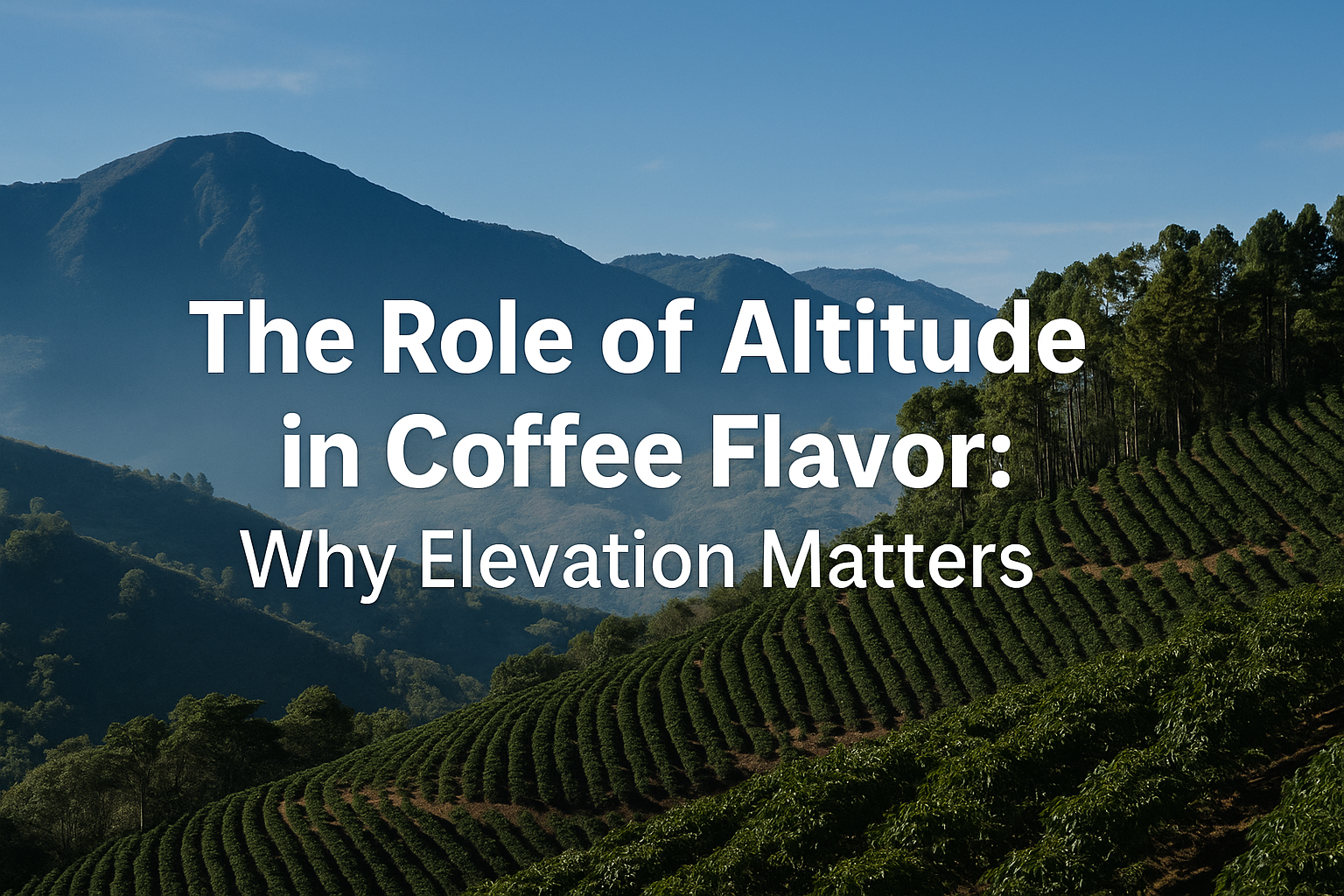Have you ever noticed that coffee from different regions can taste vastly different? One of the key factors influencing this is altitude. The elevation at which coffee is grown plays a significant role in determining its flavor, acidity, and complexity. Let’s explore how altitude shapes your coffee experience.
Why Does Altitude Affect Coffee Flavor?
Higher altitudes create cooler temperatures, which slow down the coffee plant’s growth cycle. This slower maturation allows the beans to develop more complex sugars, leading to enhanced flavor characteristics.
How Altitude Impacts Coffee Characteristics
1. Acidity
- High Altitude (>1500 meters):
- Produces coffees with bright acidity and vibrant fruity notes.
- Often described as crisp, clean, and complex.
2. Body
- Low Altitude (<1000 meters):
- Results in a heavier body and lower acidity.
- Flavors tend to be more earthy or nutty.
3. Sweetness and Complexity
- Higher altitudes lead to more sugar development, giving the coffee natural sweetness and layered complexity.
Typical Flavor Profiles by Altitude
| Altitude | Flavor Characteristics |
|---|---|
| Below 1000 meters | Mild acidity, heavy body, earthy or nutty flavors |
| 1000–1500 meters | Balanced body, moderate acidity, chocolatey notes |
| 1500–2000 meters | Bright acidity, floral, fruity, and citrus notes |
| Above 2000 meters | Highly complex, intense acidity, delicate floral notes |
Examples of High-Altitude Coffees
- Ethiopia (Yirgacheffe): ~1800–2200 meters → floral, tea-like, citrusy.
- Colombia: ~1400–2000 meters → caramel sweetness, red fruits, balanced acidity.
- Kenya: ~1500–2100 meters → bold acidity, berry-like, winey flavors.
Lower Altitude Coffee Examples
- Brazil: ~800–1200 meters → low acidity, chocolate, and nut flavors.
- Sumatra: ~1000–1300 meters → earthy, herbal, full-bodied.
How Farmers Adapt to Altitude
- High Altitudes: Require shade trees and careful pest management due to cooler climates and slower growth.
- Low Altitudes: More susceptible to pests and diseases but yield faster-maturing coffee with a heavier body.
Should You Always Choose High-Altitude Coffee?
Not necessarily. While high-altitude coffees are prized for their acidity and complexity, lower-altitude coffees offer comforting chocolatey or nutty profiles that many people enjoy.
Tip: Choose coffee based on your flavor preferences—not just altitude!
How Altitude Information Helps Coffee Buyers
Many specialty roasters provide altitude details on packaging. This can help you:
- Anticipate flavor characteristics.
- Experiment with different origins and elevations.
- Better understand your coffee’s terroir.
Final Thoughts
Altitude is a crucial factor that shapes the flavor profile of coffee. Whether you crave the bright, fruity notes of high-elevation beans or the smooth, full-bodied characteristics of lower-altitude coffee, understanding the role of elevation can help you choose coffee that best suits your taste.
